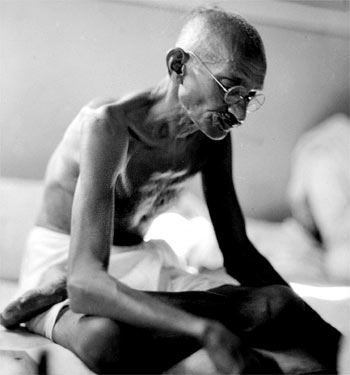TASK 1 * TASK 2 * TASK 3 * TASK 4 * TASK 5 * TASK 6 * TRANSLATE * DICTIONARY * SYNONYMS
TASK 1 * BEFORE GOING FURTHER, READ THE FOLLOWING PARAGRAPHS
1. The Indian caste system
One feature of Indian society, despite attempts by some Hindu reformers to outlaw it, is the caste system (jati) which ranks society according to occupation. Caste comes from a Portuguese word [...] Varnas are the historical division of society into four broad classes. Jatis form the complex multi-layered present-day system.
Traditionally, there were four main varnas, plus one group of outsiders: The Brahmins = the highest varna, The Kshatriyas, The Vaishyas, The Shudras. Beneath the four main castes is a fifth group. They literally have no caste. They are the untouchables, the Dalits, which means oppressed, downtrodden and exploited social group.
The caste system grew out of two main strands of thought: hierarchy is natural = the belief that a hierarchical social structure is part of the divine intention for natural order + purity = the need to emphasise the importance of ritual purity and impurity.
Members of the upper castes consider the lowest castes to be ritually unclean. Marrying someone from a different caste, whilst not officially outlawed, is generally not recognised.
Today, caste barriers have largely broken down in the large cities. "Untouchability" has been abolished by law. However, loyalty to a caste is much harder to eliminate and it still provides a sense of community and belonging, particularly in country areas.
Sources BBC + Mr Dowling.com + Dalit Org
2. Satyagraha
Satyagraha [...] is the philosophy of non-violent resistance most famously employed by Mohandas Gandhi […] Translators have rendered the word satyagraha as "civil disobedience", "passive resistance", "truth force", or "the willingness to endure great personal suffering in order to do what's right". English-speakers may also use the term "non-violent protest".
"GANDHI's quotation: “Love does not burn others, it burns itself. Therefore, a satyagrahi, i.e., a civil resister, will joyfully suffer even unto death. It follows, therefore, that a civil resister, whilst he will strain every nerve to compass the end of the existing rule, will do no intentional injury in thought, word or deed to the person of a single Englishman." SOURCE WIKIPEDIA SATYAGRAHA
" Gandhi développa l'idée de désobéissance civile a travers le concept de Satyagraha (littéralement la voie de la vérité), qui lui permis de mener sa lutte non violente contre le racisme en Afrique du Sud et de s'opposer à la politique coloniale du Royaume-Uni en Inde, puis pour l'indépendance de l'Inde." SOURCE WIKIPEDIA DESOBEISSANCE CIVILE fr
3. "Civil disobedience”/ “Désobéissance civile"
« Civil disobedience encompasses the active refusal to obey certain laws, demands and commands of a government or of an occupying power without resorting to physical violence. Civil disobedience has been used in struggles in India in the fight against British colonialism, South Africa in the fight against apartheid and in the civil rights movement of the USA and Europe […] » SOURCE WIKIPEDIA CIVIL DISOBEDIENCE
« La désobéissance civile s'analyse comme une infraction consciente et intentionnelle : elle se traduit par une attitude publique et s'inscrit dans un mouvement collectif ; elle utilise des moyens généralement pacifiques ; ses protagonistes assument le risque des sanctions auxquelles leur comportement les expose ; elle poursuit des fins novatrices et fait appel à des principes éthiques […]» SOURCE WIKIPEDIA DESOBEISSANCE CIVILE (Définition: M. J. Falcon Y Tella)
